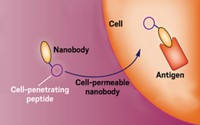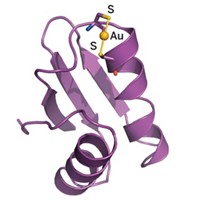Advertisement
Grab your lab coat. Let's get started
Welcome!
Welcome!
Create an account below to get 6 C&EN articles per month, receive newsletters and more - all free.
It seems this is your first time logging in online. Please enter the following information to continue.
As an ACS member you automatically get access to this site. All we need is few more details to create your reading experience.
Not you? Sign in with a different account.
Not you? Sign in with a different account.
ERROR 1
ERROR 1
ERROR 2
ERROR 2
ERROR 2
ERROR 2
ERROR 2
Password and Confirm password must match.
If you have an ACS member number, please enter it here so we can link this account to your membership. (optional)
ERROR 2
ACS values your privacy. By submitting your information, you are gaining access to C&EN and subscribing to our weekly newsletter. We use the information you provide to make your reading experience better, and we will never sell your data to third party members.
Physical Chemistry
Ligands Let Copper Click Inside Cells
Bulky amine ligands detoxify copper in cellular click reactions, enabling azide-alkyne cycloadditions in the cytoplasm without hurting cells
by Stu Borman
September 29, 2014
| A version of this story appeared in
Volume 92, Issue 39
Copper-catalyzed click chemistry, an azide-alkyne cycloaddition reaction, is often used to label biomolecules on cell surfaces to study their functions. But it is not used in the cell cytoplasm because copper can be toxic to cells. A process that uses bulky ligands to stabilize and detoxify copper, enabling the reaction to be used inside living bacteria without hurting them, has now been developed by Jing Zhao of Nanjing University, in China; Peng Wu of Albert Einstein College of Medicine of Yeshiva University, in New York City; Peng R. Chen of Peking University, in China; and coworkers (Nat. Commun. 2014, DOI: 10.1038/ncomms5981). The researchers used tris(triazolylmethyl)amine-based ligands to corral copper as it helps fluorescently mark proteins with pH-dependent conformations in the cell cytoplasm and periplasm. This approach enabled them to determine pH gradients across the Escherichia coli cytoplasmic membrane. They also measured the E. coli transmembrane potential and determined the force required to move protons across the bacterial inner membrane under normal and acid-stress conditions.




Join the conversation
Contact the reporter
Submit a Letter to the Editor for publication
Engage with us on Twitter